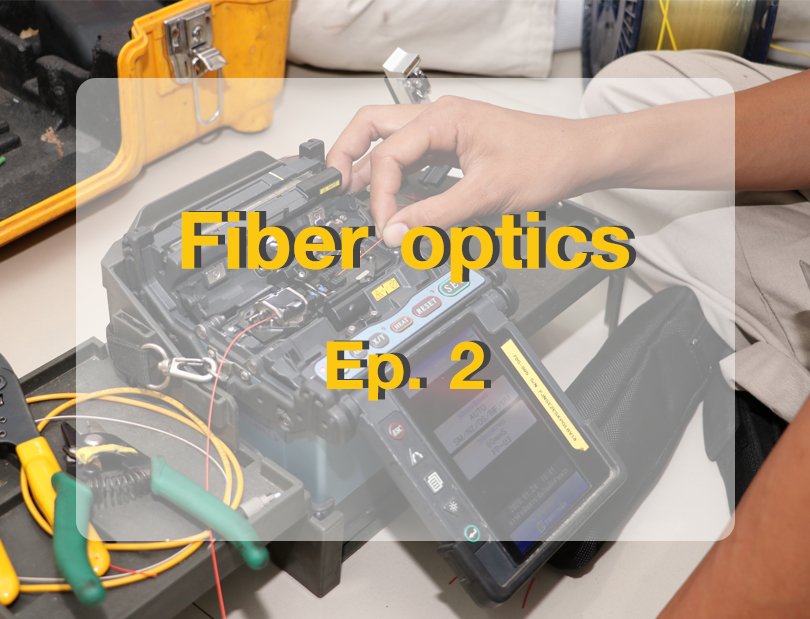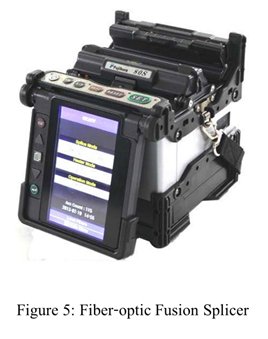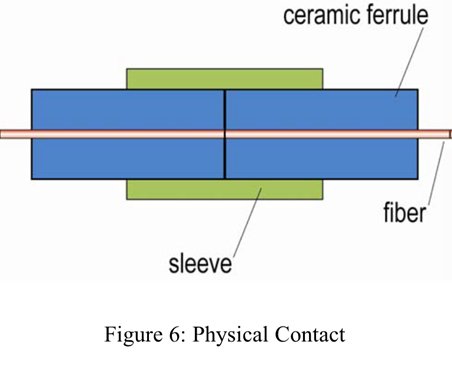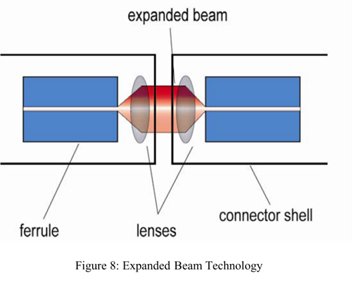Fiber Optic Link Components (Part 2)

Fiber Optic Link Components (Part 2)
Part 1 of Fiber Optic Link is another two components as shown below.
Connectors
Fiber optic links require to connect the transmitter to the fiber optic cable and the fiber optic cable to the Optical Receiver. In general, there are two methods to link optical fibers together.
1. Fusion Splice
The first method is called a fusion splice. This operation consists of directly linking Core Fiber with Core Fiber by welding with an electric arc or a fusion splicer (see Figure 5). The advantages of this approach are that the linking method is fast and simple and there is very little insertion loss The disadvantages are that the link is relatively fragile, is permanent, and the initial cost (of the fusion splicer) is high.

2. Connetors
The second method involves the uses of fiber optic connectors. A connector terminates the optical fiber inside a ceramic ferrule, using epoxy to hold the fiber in place. The connector can be connected and disconnected hundreds or even thousands of time without damaging the connectors and cheap. The disadvantages of this requires special tools, and the insertion loss can be higher when compared with fusion splicing.
Fiber connector - There are two types of fiber optic connectors is.
2.1 Physical Contact Connectors
The principle of physical contact connectors fiber in a tightly to leaned ceramic ferrule. Thin valves the direct contact of polished fibers within two ceramic ferrules. The ferrules are aligned using a ceramic alignment sleeve (see Figure 6). Insertion loss is a function of the alignment accuracy and the polish quality. There are springs behind the ferrule to ensure that the two ferrules are in constant contact even in high vibration and shock environments. The principle of physical contact connector fiber in a tightly to learned ceramic ferrule. Corner and ceramic on both sides.

Physical contact connectors they are rugged, repeatable, easy to clean, cost-effective, and perform well. In addition, for the There are many types of fiber optic connectors used in various applications. The most popular single fiber connectors are (see Figure 7):
- FC-Ferrule Connector: FC it is still used in Telecom and datacom it is a spiral rotating in and out.
- LC-Lucent Connector: LC their smaller size pull-in, pull out. no spiral
- SC-Subscriber Connector: SC is larger than the LC can be pulled into pulled out.
- ST-Straight Tip Connector: ST is the size closest to FC but without screw lock is used.

2.2 Expanded Beam Technology
The other connector technology is expanded beam,which consists of placing a lens at the exit of each fiber to widen and collimate the light there is between the two sind (see Figure 8). Loss approximately 0.8 to 2.5dB typical and be careful about the dust than usual.

Receiver
The last component of the fiber optic link is the optical receiver, which uses a photodiode to convert the optical signals into electrical. The two types of photodiodes used are Positive Intrinsic Negative (PIN) and the Avalanche PhotoDiode (APD)
In a similar fashion as that of the laser transmitter, the photodiode will receive wavelengths depending on material composition (see Figure 9).

By MiMhee
| Survey On Site or Design for Esimate Cost | No charge |
![]() SLA : Bangkok, We're support and service with in 12 hours.
SLA : Bangkok, We're support and service with in 12 hours.
![]() SLA : Upcountry, We're support and service with in 24 hours.
SLA : Upcountry, We're support and service with in 24 hours.
MORE INFORMATION
TEL. 02-889-4701, 02-889-4702 FAX. 02-889-4700
CALL CENTER : 082-726-5320, 082-726-5321, 082-726-5322



